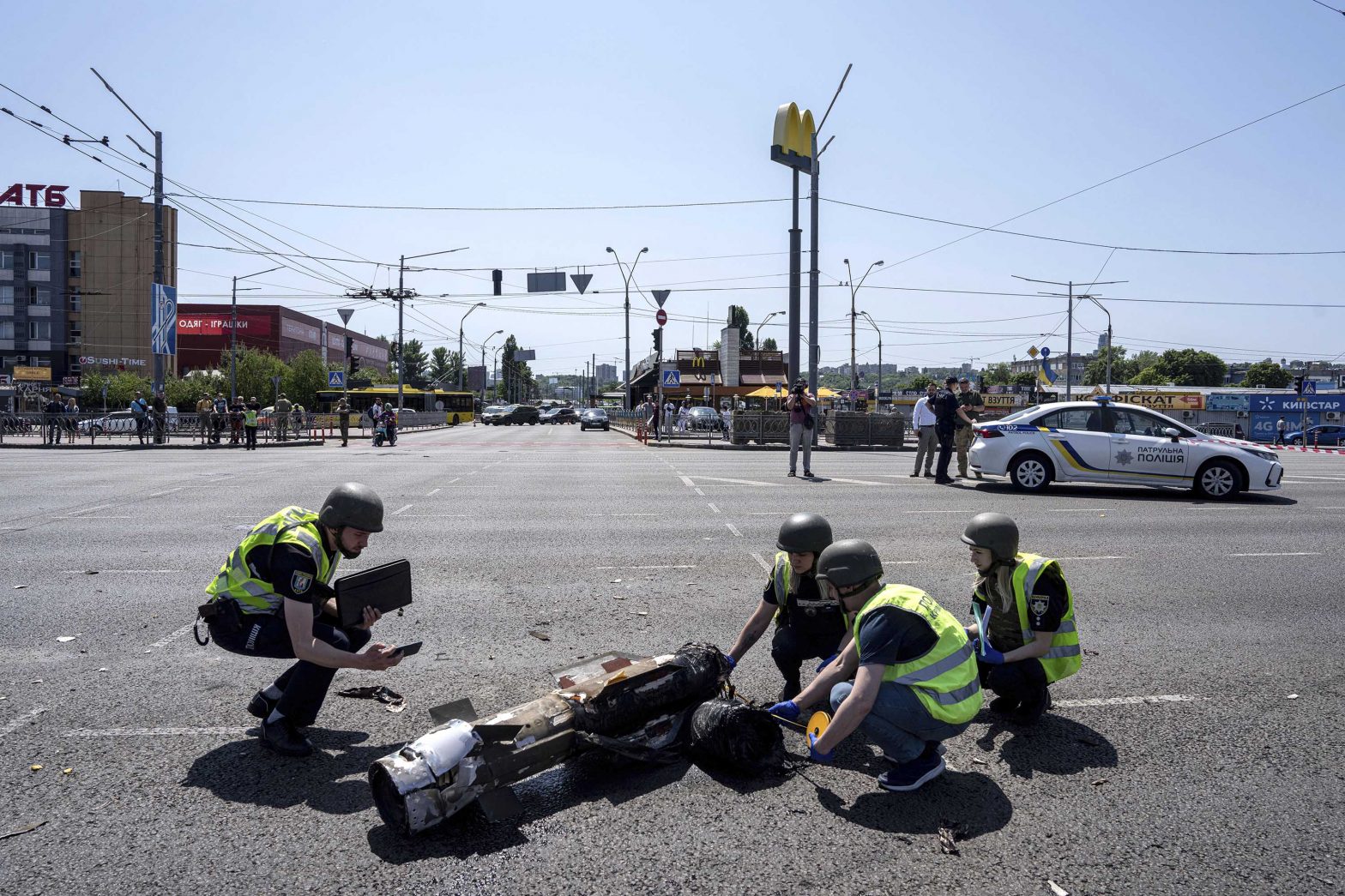Introduction:
In the ongoing conflict between Ukraine and Russia, tensions have once again escalated as Ukrainian air defenses successfully intercepted and destroyed a significant number of “air targets” launched by Russian forces. This latest attack on Kyiv has further intensified the already volatile situation in the region. In this article, we will provide a comprehensive analysis of the recent events, including the scale of the attack, the effectiveness of Ukrainian air defenses, and the potential implications for the conflict as a whole.
The Scope of the Attack:
According to Gen. Valerii Zaluzhnyi, the commander-in-chief of Ukraine’s Armed Forces, Russian forces launched a total of 75 “air targets” overnight. Of these, Ukrainian air defenses managed to destroy 67, showcasing their capabilities in countering aerial threats. The targets included 37 cruise missiles, 29 Shahed drones, and one reconnaissance unmanned aerial vehicle. The attack also involved the use of Iranian Shahed-136/131 UAVs, highlighting the complex nature of the conflict and the involvement of multiple actors.

Effectiveness of Ukrainian Air Defenses:
Ukraine’s successful interception and destruction of the majority of the air targets demonstrate the country’s growing capabilities in air defense. The ability to neutralize cruise missiles and unmanned aerial vehicles showcases the effectiveness of Ukrainian military technology and the skill of its personnel. This achievement not only protects critical infrastructure but also boosts morale within the Ukrainian Armed Forces and the general population.
Russian Tactics and Objectives:
The utilization of cruise missiles and drones in this attack highlights Russia’s continued determination to exert its influence in the region. The firing of air-launched cruise missiles from strategic aircraft in the Caspian Sea and the deployment of Iranian drones indicate the multi-faceted approach employed by Russian forces. The choice of targets, including military facilities and critical infrastructure, suggests an aim to disrupt Ukrainian operations and sow fear among the population. However, the resilience of Ukrainian air defenses has undermined the success of this attack, preventing significant damage and casualties.

Humanitarian Impact:
While Ukrainian air defenses effectively neutralized the majority of the air targets, some damage to residential buildings and infrastructure facilities occurred. The fact that no casualties were reported indicates the effectiveness of precautionary measures and emergency response efforts. Nevertheless, the impact on the affected communities cannot be overlooked, and efforts should be made to address the immediate needs and provide necessary assistance to affected individuals and families.
Implications for the Conflict:
The latest escalation in the conflict raises concerns about the potential for further hostilities. The significant number of air targets launched by Russian forces demonstrates their continued aggression and willingness to employ advanced weaponry. Ukrainian air defenses have proven their capabilities, which may serve as a deterrent to future attacks. However, the conflict’s underlying complexities and the involvement of external actors require a broader diplomatic and political approach to achieve a sustainable resolution.
Conclusion:
The successful interception and destruction of a substantial number of air targets by Ukrainian air defenses highlights the country’s growing capabilities in countering aerial threats. While damage to buildings and infrastructure occurred, the absence of casualties underscores the effectiveness of emergency response efforts. The latest attack emphasizes the need for a comprehensive resolution to the conflict, one that goes beyond military capabilities and incorporates diplomatic efforts to ensure lasting peace and stability in the region. The international community must continue to support diplomatic initiatives aimed at de-escalating tensions and facilitating a peaceful resolution to the ongoing conflict between Ukraine and Russia.
©world-news.biz
